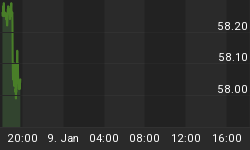Back in 2015, Facebook set itself a lofty goal: It would have 50 percent of its power supplied to facilities from renewable energy sources by 2018. It hit that target a year early, in 2017, and now it’s upping the ante: By 2020, it plans on going 100-percent renewable, cutting its greenhouse gas emissions by 75 percent.
The social media giant purchased its first renewable power in 2013, and since then has signed more than 3 GW of solar and wind contracts. But it’s biggest push has come over the past 12 months, during which time it’s signed off on over 2.5 GW to power its data centers in the U.S. and Europe.
Most of that is in the United States, with 300 MW in Norway.
Even with Facebook’s new commitment for 2020, it’s still behind some other Silicon Valley giants, but it’s become a rivalry and they’re each pushing the other to do more as renewable prices drop.
Google is in the lead, with 3 gigawatts contracted just this year, following by Apple, which is already powering all data centers and offices with renewable energy, and Amazon, which by January this year had hit the 50-percent renewable market for its data centers. Microsoft is closing in, targeting 60-percent renewable energy for its operations early in the next decade, according to Greentech Media.
Amazon has a long-term goal of powering its global infrastructure by 100 percent of renewable energy, starting with the biggest wind farm so far, Amazon Wind Farm Texas, which is set to add over 1 million megawatt hours of clean energy to the grid annually.
Samsung also promised this June to make its operations in the US, Europe and China run on 100 percent renewable energy by 2020.
According to Bloomberg New Energy Finance, corporations have purchased 7.2 GW of clean energy in 2018. We’re only just over halfway through this year and they’ve already beat last year’s record by nearly 2 GW. Related: 3D Guns: Where Tech And Anarchy Merge
BNEF estimates that 140 companies which signed 100 percent renewables pledges will need to purchase another 197 TWh of clean energy, if they want to meet their targets by 2030. That would mean another 100 GW of global solar and wind capacity.

(Click to enlarge)
Source: Business Renewables Center
“The trend of more companies making commitments and then also smaller companies pooling their demand together to take advantage of the economies of scale of a large solar wind project… are two huge drivers that have really kept momentum going in this space,” said Kyle Harrison, a corporate energy procurement analyst at Bloomberg, commented.
Related: How Brexit Will Impact The British Pound
So, while Facebook may not be leading the Silicon Valley renewables race, it does have one feather in its cap: So far, it ranks as the biggest corporate buyer for 2018, purchasing another 1.2 GW of clean energy. It’s also said to hold rank as the second-largest corporate buyer of renewable energy globally this year.
And, of course, Facebook itself thinks that for any new renewable project, securing a deal with the social media giant is the “ultimate financial commitment”—after all, Facebook’s energy needs will only continue to grow, so this is the holy grail for new projects, especially since the company will work directly with renewable developers without using a utility as a middleman.
It’s a mouthwatering prospects for the renewables sector because Facebook is ravenous for energy to keep its data centers operating. Facebook used 2.46 million megawatts hours of energy last year alone. That’s the equivalent of the annual usage of nearly 342,000 American households. Of that, 95 percent was consumed by data centers.
By Michael Scott for Safehaven.com
More Top Reads From Safehaven.com
















